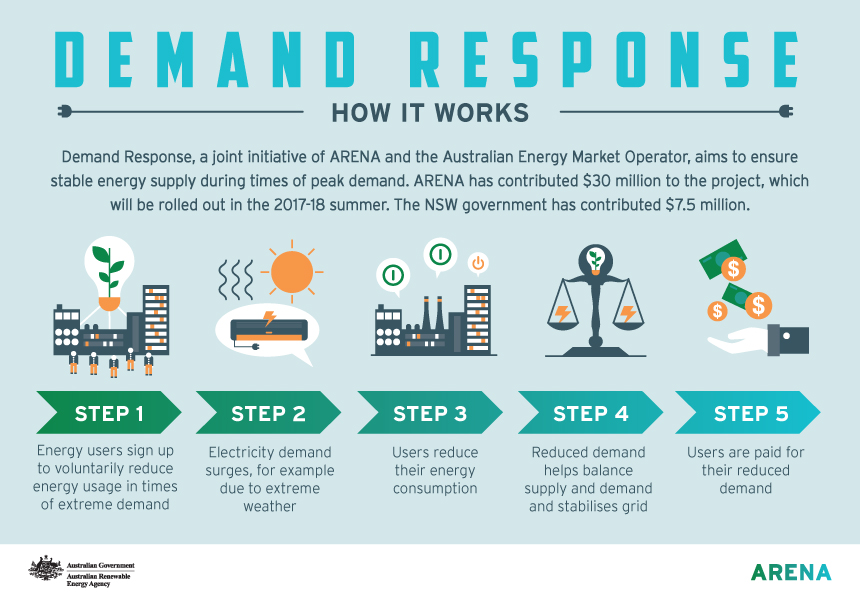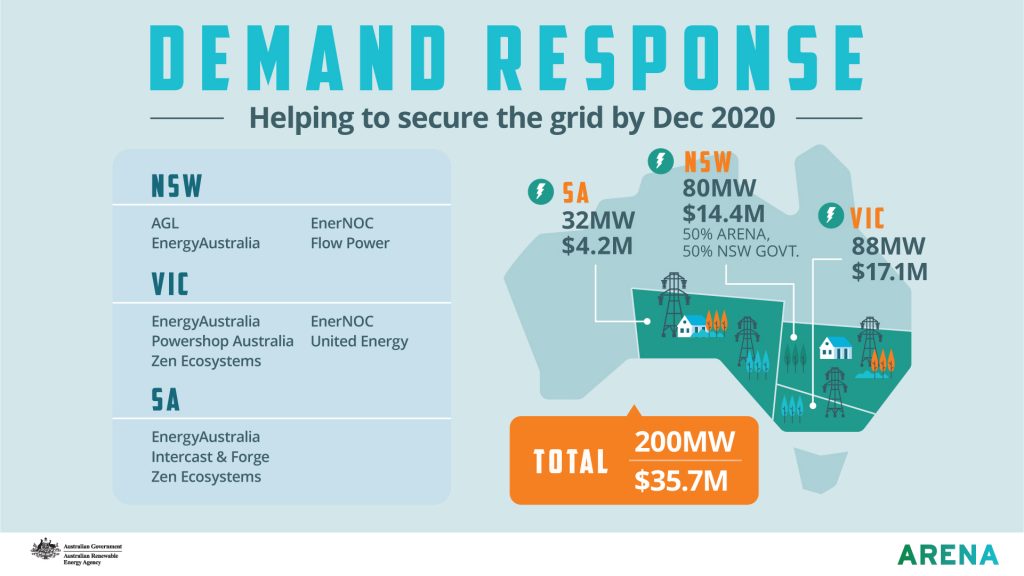NSW's 'virtual power plant' to curb summer blackouts

The Australian summer is here in all its resplendence, but with the sun and fun comes the very real potential for widespread power outages across the country. We know just how inconvenient, and sometimes dangerous, blackouts can be, but what can we do to curb them?
Thankfully, this has been the focus of large sectors of Australia’s innovative energy sector, with tech firm EnerNOC set to launch a 20 MW demand-response initiative in New South Wales.
Financed by ARENA and the NSW Government, the ambitious and exciting project will provide a ‘virtual power plant’ at a fraction of the cost of creating new supply of electricity in extreme weather conditions. This will be achieved by managing a ‘reserve’ of commercial and industrial businesses that agree to temporarily reduce or shift their power consumption, all in response to time-based rates or other forms of financial incentives.
EnerNOC has already recruited 16 of the approximately 20 individual businesses that will be involved in the NSW project. Firms such as paper manufacturers, metalworkers and glass manufacturers will all take part. The reserve will be delivered entirely by load curtailment (ie, not by diesel generation) and by companies that are not already participating in any form of demand response.
ARENA is excited to lend a hand to this increasingly valuable resource option and its proven global use in quashing unplanned outages and smoothing unwanted price spikes. It gives consumers the opportunity to play a significant role in the operation of the electricity grid while earning incentives.
At present, the demand response solution has not been fully adopted in Australia, while in many other countries, up to 15% of peak electricity is supplied by demand response.

Boston-based EnerNOC is the largest demand response provider in the US, operating some of the most widespread demand response networks in the world, including California, Japan and Taiwan. Using sophisticated energy intelligence software and automated hardware installed on participating business’ premises, EnerNOC is shining a light on traditional grid consumption.
The NSW reserve can be initiated remotely to respond within 10 minutes of a notification from the Australian Energy Market Operator (AEMO) that a spike in electricity demand is taking place — ensuring the public comfort during peak periods.
Minimal disruption
Matt Grover, EnerNOC’s manager of market development, says demand reductions can be achieved without significant disruption to participating businesses.
“The loads involved in this program are pre-planned and are voluntarily curtailed for short periods of time,” said Grover.
“We choose parts of a facility that have tolerably low opportunity costs and can withstand brief interruptions. For example, you might have a manufacturer who is crushing to a stockpile and can drop their stockpile for a period of time. Or you may have a cold store that’s got some thermal storage and can do without electricity for a brief period of time.”

ARENA-AEMO collaboration
Additional to the NSW project, EnerNOC will provide another 30 MW of demand response through similar projects in Victoria and South Australia, freeing up a total of 50 MW to address surges in peak national electricity demand.
The projects form part of the national demand response trial announced by ARENA and AEMO in October 2017 to provide a total of 200 MW of emergency reserves for summer blackouts and other extreme demand peaks by 2020.
This $35.7 million collaboration between the two agencies is designed to test proof-of-concept projects to support grid security and stability. ARENA is committed to providing $28.6 million on behalf of the Australian Government, towards the initiative. $7.2 million of that is being matched by the NSW Government for NSW-based projects.
Business and residential participants
Altogether 10 pilot projects have been awarded funding under the initiative. Apart from large-scale industrial and commercial businesses, these initiatives will also recruit thousands of households to voluntarily sign up to participate in demand response in return for incentives. Through this, household participants will have optional user overrides.
ARENA CEO Ivor Frischknecht says the demand response scheme will explore various avenues to not only ease the strain on the electricity grid and prevent blackouts, but also to put money back into the pockets of Australian businesses and households. In turn, this will help to reduce energy costs and emissions — a win-win for all.
“We are looking to test a range of technologies and approaches to deliver the most cost-effective outcome,” Frischknecht says.
“Through this initiative we’ve been able to build a virtual power plant the size of two of Tesla’s giant 100 MW batteries (such as that recently installed in South Australia) in a matter of months for a fraction of the cost of building new supply.”
Untapped potential
Managing director and CEO of AEMO Audrey Zibelman says demand response has untapped potential to help satisfy demand during extreme peaks in Australia, just as it does in other countries.
“These demand response projects will help manage spikes in peak demand in a cost-effective way using our existing electricity infrastructure and clever new technology,” Zibelman says.
“This will create the proof of concept for a new market mechanism that will ultimately be to the benefit of Australian consumers.”
Australians love to talk about the weather, but don’t want to have to suffer because of it, and demand response projects like these are positive steps toward a stable and reliable energy future.
Designing a robust cable for aquaculture
To ensure the health of farmed marine animals, the components of an aquaculture system must work...
Protecting your enclosures from environmental hazards
Ingress Protection (IP) ratings provide valuable information about the protection level of an...
Circuit protection for a luxury yacht
Siemens has collaborated with Bluegame, a brand of the Italian Sanlorenzo Group specialising in...





